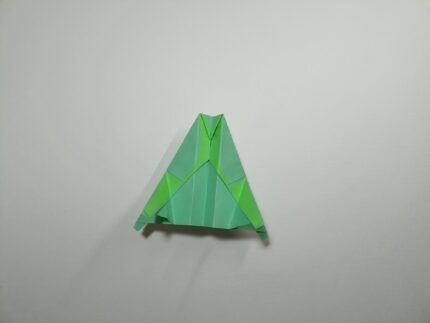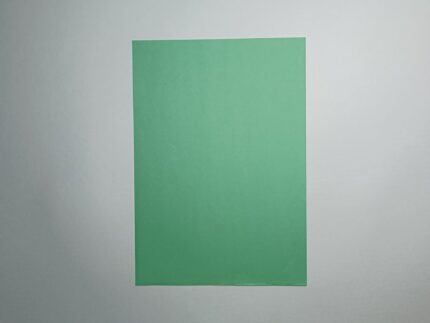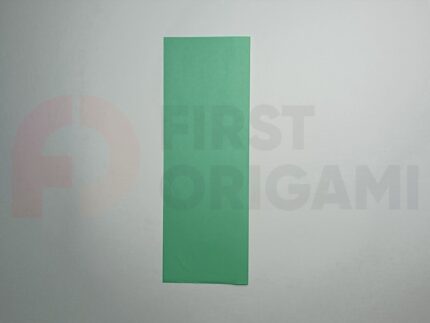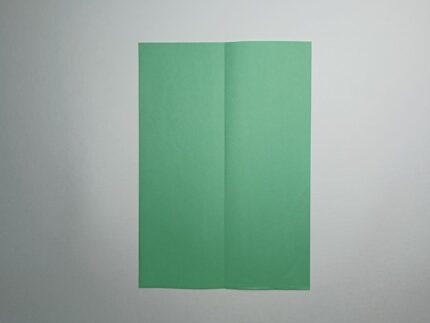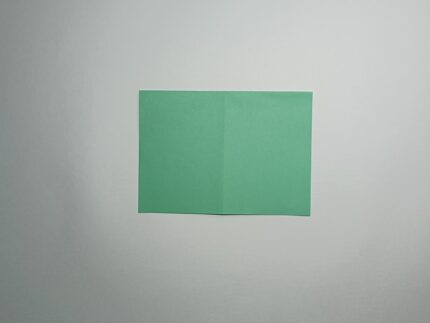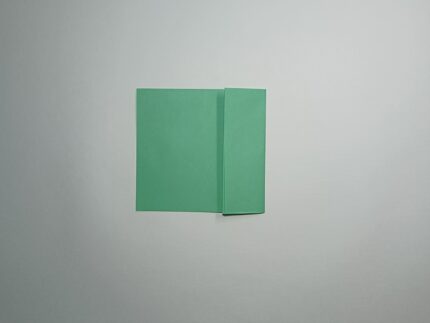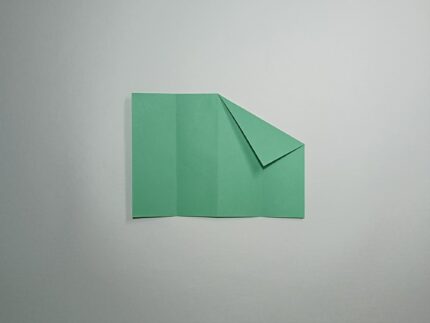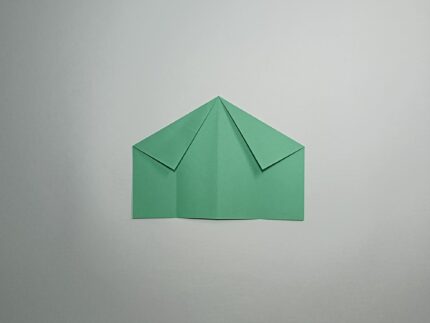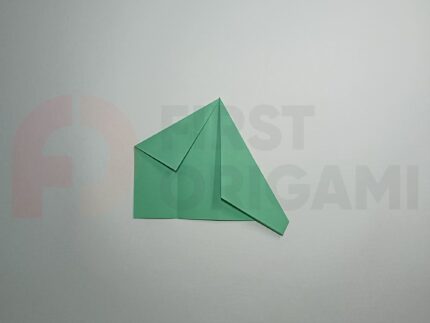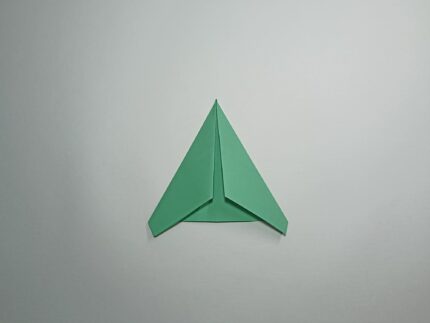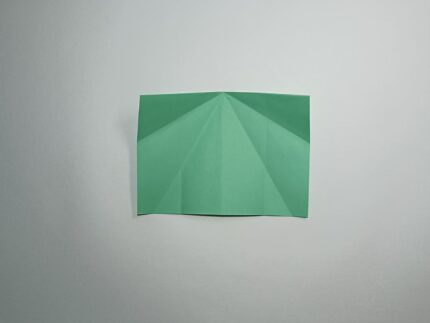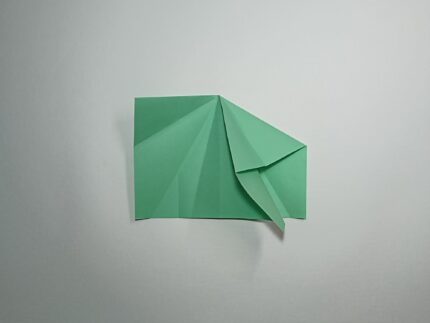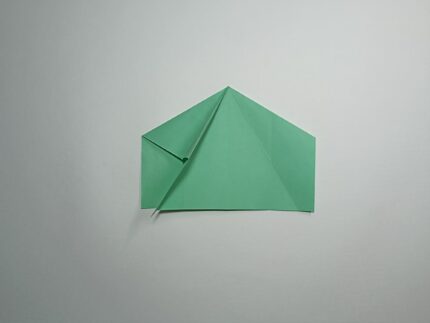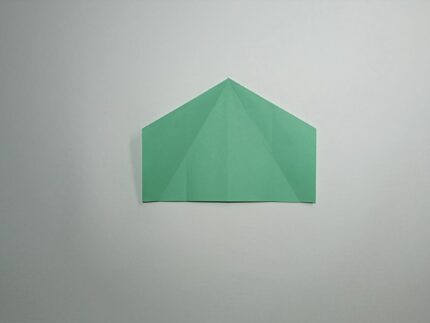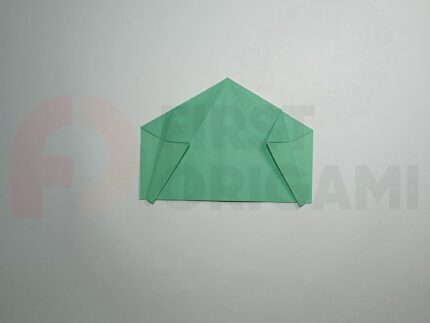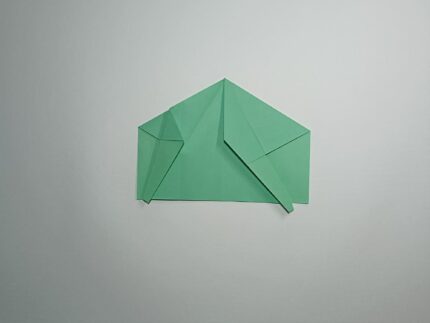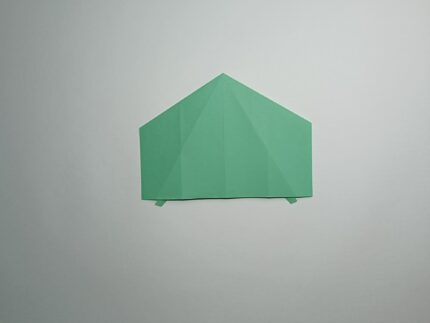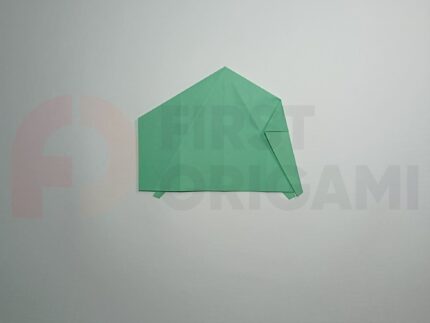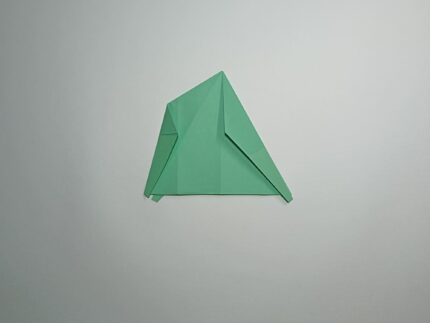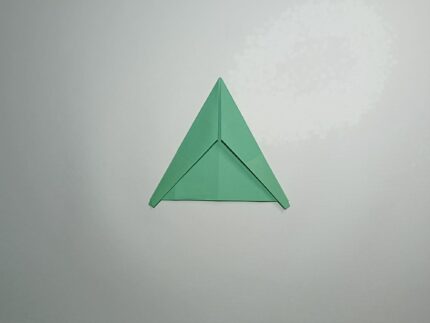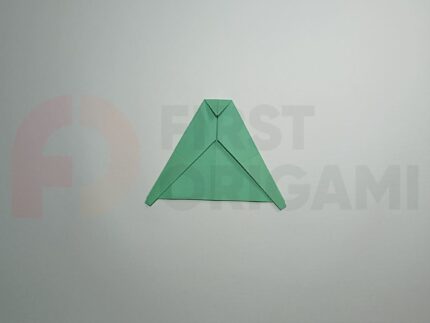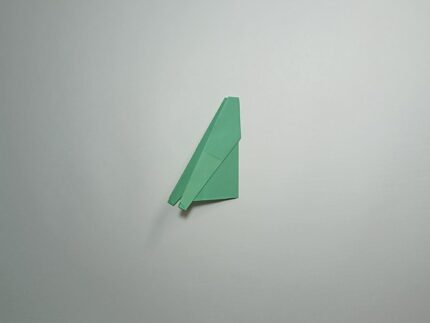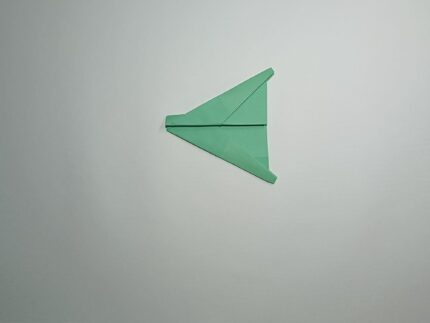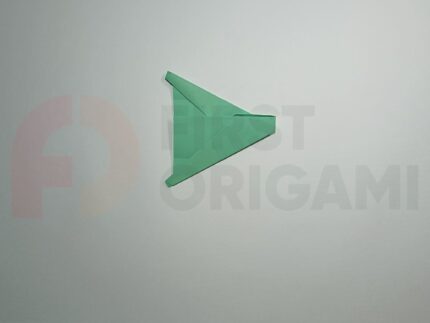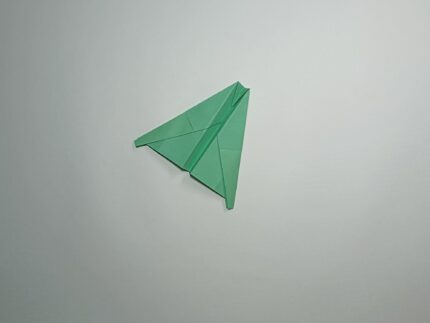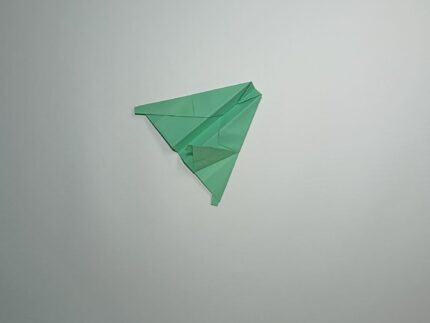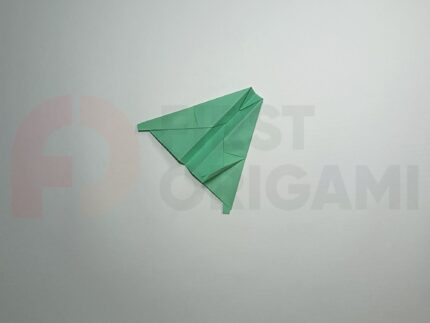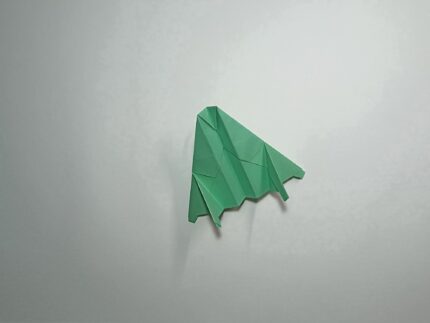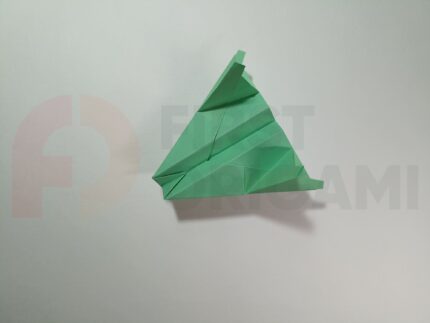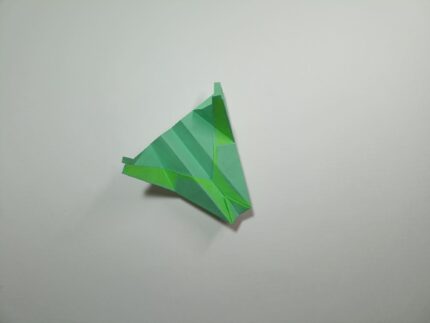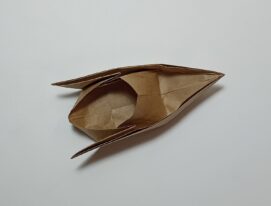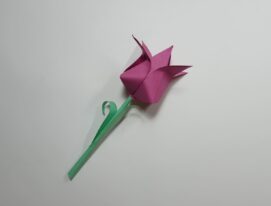Origami Vulture Airplane
The airplane according to the proposed assembly instructions turns out to be small, but very beautiful. Swept wings, a customizable flight path in the form of keels, and a durable body make the model interesting and unlike others. The vulture is very nimble and swift, performs a full turn with a 360-degree turn and returns to its pilot.
The assembly process is complex and includes 16 steps. Some steps contain two symmetrical folds. The process description and illustrations will help you cope with the task. The main thing is to show diligence and attentiveness.
To create this aircraft, select a sheet of paper and mark a vertical fold, aligning the sides and creasing the fold.
Fold a triangle with a corner in the center of the figure and the top located on the side line marked earlier on the right side.
Open all the folds. You should end up with a horizontal rectangle with five lines extending from one top point.
Perform a complex inner fold. Press the edge of the upper side fold inward until the second assisting line from the middle is aligned on the front and back sides. Crease the folds.
Fold the sides of the top layer of the figure, aligning them one by one with the marked lines coming out from the top of the figure, as in the illustration.
Bend the second wing, using the side lines of the first one as a guide. Spread the wings of the shape and align the body.
The keels can be folded back as shown in the illustration, connecting the point where the two layers join to the edge of the fold applied. They can also be aligned parallel to the body.
The model is suitable for experiments. Adjusting the direction, depth, and angle of the keels affects flight performance and the ability to perform other stunts and aerobatic maneuvers. You can fly the airplane in the room and watch it make a beautiful turn. This is the best idea to pass the time in the company of a friend during bad weather when it is not possible to go outside.
